CONSERVATION
CONSERVATION AT CORK PUBLIC MUSEUM
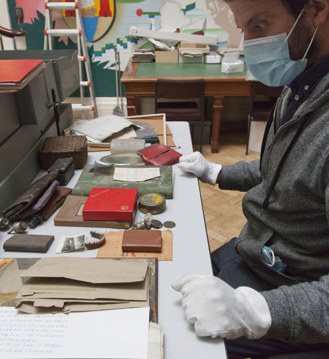 .
. 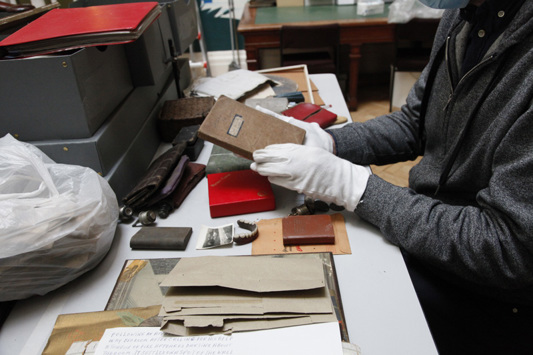
(Above and right) Curator Daniel Breen assessing items related to WWI soldier Edward Meade, that were acquired in 2020
In a museum context, conservation refers to the preservation, repair and consolidating of damaged or fragile objects. Typically, major conservation projects can be expensive and time consuming. However, the need for conservation can be minimised by the implementation of proper procedures and guidelines in collection care, object handling, storage and exhibition; known collectively as ‘preventive conservation’.
Though there are no full-time conservators at Cork Public Museum, we do use external consultants and conservators when the need arises. This predominately happens if we are preparing an exhibition where objects need to be treated before going on display or when we loan material to another institution. By employing preventative conservation measures at the museum, we lessen the objects’ exposure to potential hazards or risks, which reduces the need for costly conservation work.
However, unexpected events such as the flooding of the museum in 2009, can result in unplanned conservation work and long-term issues around the damage caused to the museum buildings and collections. Many of the preventative measures we now have put in place at the museum were shaped by this disaster and the lessons and experiences we learned in 2009.
Conservators are highly skilled professionals trained to carry out conservation work. Different materials, such as wood, stone, clay, paper, metal, all have unique physical properties and characteristics and therefore require different conservation techniques and methods when treating them. An excellent definition of a conservator is found on the website of the Institute of Conservator-Restorers in Ireland (ICRI) and reads as follows:
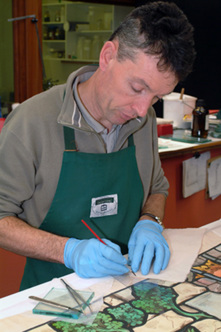
(Above) Paul Curtis of Muckross House Bookbinding and Conservation Ltd, undertaking some off-site paper conservational work on behalf of CPM.
“Conservation is an interdisciplinary field involving studio practices, science and the humanities. Conservator-restorers specialise in specific materials or object types. Conservator-restorers may work independently or alongside fellow professionals such as curators, librarians, technicians, engineers and educators. They can be freelance, part of a studio or part of a heritage organization.”
To learn more about Irish conservators and the work they do, please check out:
https://www.icriconservation.ie/
Conservation Projects at Cork Public Museum
To better understand the role conservation plays at Cork Public Museum, we will now look at some of our most recent projects. This will serve to illustrate the amazing results from the professional and sympathetic work undertaken by the conservators involved, as well as to highlight some of the methods and techniques employed in modern conservation.
- a) The Cork Flood of 2009
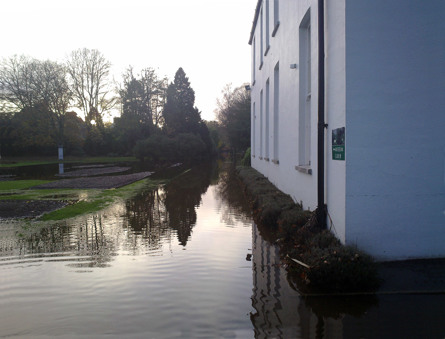
.
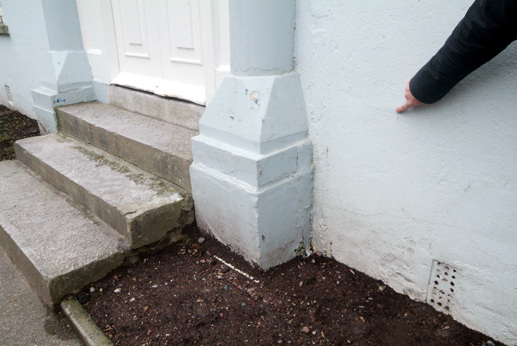
(Above, left and right) The museum the day the flood started to receded in 2009. And the height of the flood waters indicated on the wall of the museum
(Above) The museum on the day the flooding started to receed in 2009
(Right) The height of the water line during the flooding in 2009.
In November 2009, Cork City suffered one of the worst floods in its history. It resulted in about €100 million worth of damages and affected many households, businesses and public services. Unfortunately, as Cork Public Museum is located in a low-lying area in close proximity to the river, both museum buildings were significantly damaged in the flood. The museum had to close for 8 months for necessary repairs and refurbishments.
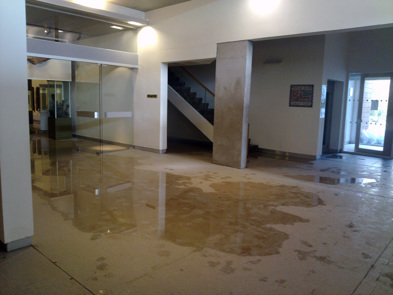 .
. 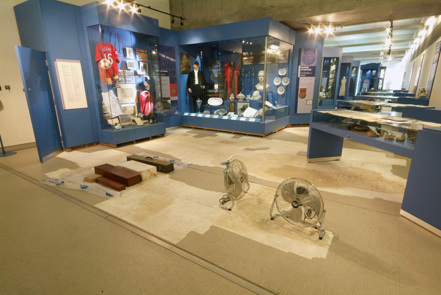
(Above) The museum entrance area flooded.
(Right) The drying out phase. All floor materials had to be replaced.
Fortunately, the vast majority of our collections are stored on the upper floors of the museum so these escaped damages. Unfortunately, we had just received delivery of the remainder of our Jack Lynch Collection a few days before the flood. These items were being held in a ground floor office until they could be processed and moved upstairs to storage. The collection consisted of personal letters, documents, photographs and other possessions. A significant portion of the collection was water damaged and would require conservation.
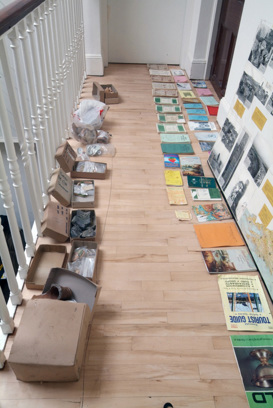 .
. 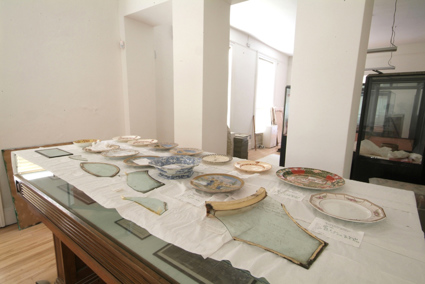
(Above and right) Drying out items and documents, damaged during the flood of 2009.
One other collection that was also affected by the flood water was our handgun collection. This collection was being kept at the time in a ground floor safe. In the days preceding the flood, when assessing the extent of damages caused, we inspected the safe and it appeared to have escaped damage. Our attention then turned to fixing the many other problems across the two buildings and to getting the museum opened. When we re-examined the safe several months later, we found that the guns were showing signs of rust, even though they had not been anywhere near the water. We discovered that the base of the safe had absorbed enough flood water to create a damp atmosphere, ideal for the buildup of rust on the surfaces of the gun metal. The handguns required conservation to treat the damage.
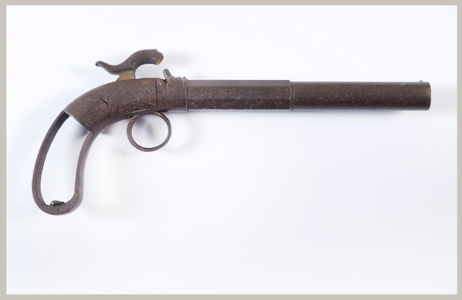
(Above) Fenian pistol, belonging to Captain Deasy. Received water damage because of the flooding in 2009.
As the damage caused by the flooding in 2009 affected many different objects and material types across both collections, the museum employed conservation consultant, Claudia Kinmonth, to survey and assess the damaged material and determine what course of action was needed.
The Jack Lynch Collection
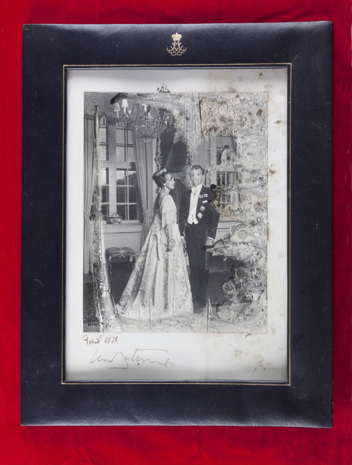
(Above) Photograph from the Jack Lynch collection that was water damaged during the flood of 2009.
The material damaged in this collection was predominately paper documents and photographs. Both of these mediums require different skillsets and treatment methods. Cork Public Museum employed the services of paper conservator, Pat McBride, and photographic conservators, David Davidson & Sons. This work was predominately funded by a grant from the Heritage Council of Ireland.
The Handgun Collection
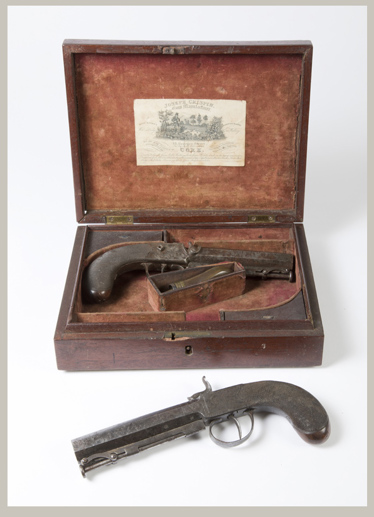
(Above) Duelling pistols that were conserved by metal conservator Michael Duerden
Metal conservator, Michael Duerden, was hired to tackle the arduous task of removing the rust from about 70 weapons that had been stored in the safe. The history of the weapons, pistols and revolvers span over two hundred years and were involved in foreign, as well as local, military conflict.
The opportunity was taken to also examine and assess our other larger firearms such as rifles and muskets. These were all cleaned and any weapon that showed signs of woodworm were isolated and treated separately by wood conservator, Colm Kenny.
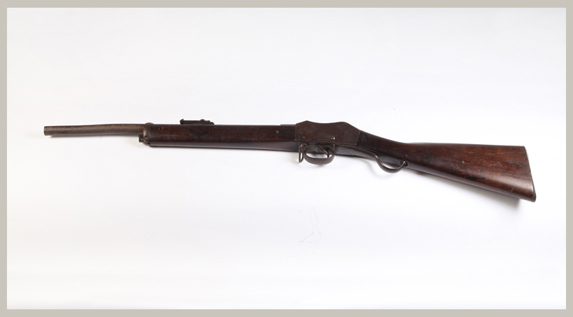

(Above) Police carbine captured by the Irish Volunteers from Cloyne Barracks in 1920
(Right) German Lugar pistol that belonged to Michael Collins.
Both these projects were very successful in mitigating the damage caused by the flooding in 2009, ensuring that two important collections are preserved for this and future generations.
- b) The Mason’s Banner
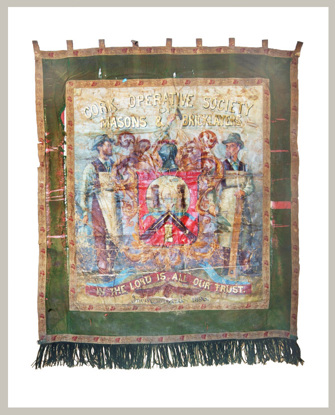 .
. 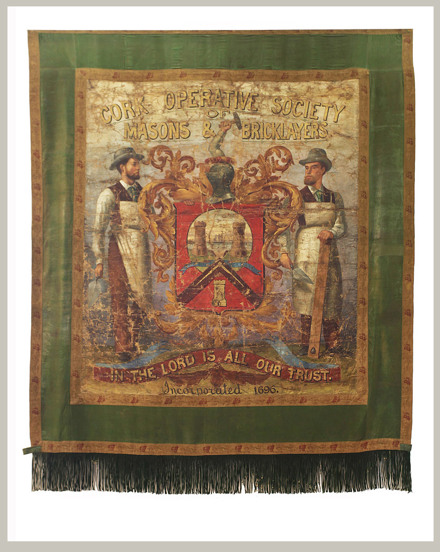
(Above) The masons banner before restoration
(Right) After restoration
The conservation of the Mason’s Banner held by Cork Public Museum is an interesting case study. To give it its full and proper title, ‘the Marching Banner of the Operative Society of Masons and Bricklayers’ dates to 1843. It was originally created for one of the monster meetings led by Daniel O’ Connell during this period, in his bid to repeal the Act of Union. It is an excellent example of a double-sided, oil painted banner. Measuring just under 3.5 metres in height, it is a fine example of an ‘Irish style’ banner, very elaborately decorated and edged with brocaded tape.
Marching banners typically depict the dignity of the trade, brotherhood, unity and justice. The Mason’s Banner depicts, on the front, two Victorian masons in traditional attire on either side of the Cork Coat of Arms with their trade tools and the words, ‘In the Lord is all our trust’. The banner was also political, however. On the reverse is a painting of Grattan’s Parliament (now the Bank of Ireland), set in a circle of Celtic knots with the arms of the four provinces. In the corners are portraits of Irish politicians, including Daniel O’Connell and Henry Grattan.
The banner was also used during the processional march through the city for the opening of the 1902 Cork International Exhibition. It was ‘Banner Number 17’ in order of participation in the march to the Mardyke, where the Exhibition was to be held.
Marching banners are easily perishable, from being battered on marches and very often being stored in damp, cramped conditions. Though the banner was in a bad state when it was given to the museum in the 1980s, its condition deteriorated significantly due to bad storage conditions. This resulted in the banner becoming very creased and developing several large tears and resulting paint loss. Overall, the banner’s condition was extremely poor before conservation.
 .
. 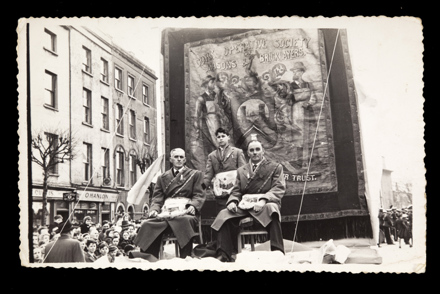 .
. 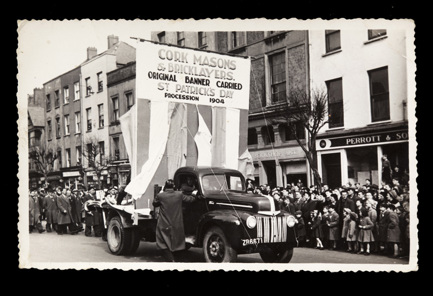
(Above) A St Patricks Day Parade (unknown date) showing the Mason and Bricklayers banner being displayed.
(Above) A St Patricks Day parade
Textile conservator, Rachel Phelan, undertook the conservation works with her colleagues, Karen Horton and Ciara Brennan. The banner was surface cleaned and was repaired throughout. The painting’s conservator, using acrylic pigments, carried out limited retouching to the front faces of the banner. The retouching was focused on the written scripts, the faces of the two Masons and their tools, allowing the banner to be more easily comprehended by the viewer.
Upon completion of the conservation works, the signature of a Hugh C. Charde was identified on the painting. Mr. Charde was a late 19th century, Cork landscape artist and was also Master of the Crawford School of Art. It seems Mr. Charde was employed by the Masons to carry out repairs of the Banner in the 1890s, prior to the 1902 Exhibition. So, there has been a long history of repair and restoration of the Banner.
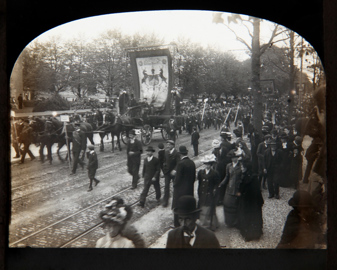
(Above) Example photo of how the Mason and Bricklayers banner would have been displayed.
This project highlights a number of important points:
- The first is that the inadequate storage practices used by the museum at the time resulted in the banner becoming more damaged than it would have been if preventative conservation methods now employed at the museum had been
used. The banner, if received today, would be stored in such a way as to prevent it getting creased, as well as ensuring any damage already evident on the banner did not get any worse. This would have lessened the amount of work and money needed to complete the project.
- Secondly, the objective of Rachael Phelan and her colleagues was not to ‘restore’ the banner back to its original condition but to prevent further damage and make it safe to put on display. Modern conservation focuses on ensuring the object is structurally sound while preserving the history and look of the object. In the banner’s case, the conservators’ focus was on the lettering and the hands and faces of the painted figures. Their goal was not to eliminate the obvious signs of age on the banner’s paintings as these imperfections tell the banner’s story and the many events and occasions it witnessed in its lifetime. Therefore, museum conservation must be careful not to over-restore objects, as this can often devalue their historical importance.
- Finally, this project was driven by the desire to put the banner on display, so Rachael Phelan strengthened the pole sleeve at the top of the banner, which allowed us to hang the banner safely without causing damage to the banner. Therefore, conservation not only improved the condition of the banner, it also allowed us to put a very important and historical object on display.
The museum would like to thank Mason, Jim Fahy, for his drive and determination to get this banner on display.
 .
. 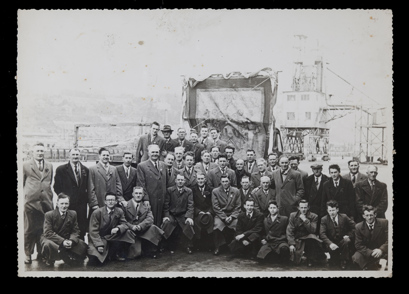
(Above left and right) Groups of masons and bricklayers in front of the banner (unknown date).
- c) The Tsar, the Rosehills and the Music Shop Exhibition
On May 25th, 2017, a new permanent exhibition on the history of the Cork Hebrew Congregation officially opened at Cork Public Museum. The conception of this exhibition was prompted by the closure of Cork’s only synagogue in February 2016. It had been opened since 1905 and served a community that had been established in Cork since the 1880s. The exhibition was the culmination of over twelve months of consultation between the museum and Clare Rosehill, trustee of the Cork Hebrew Congregation, following the synagogue’s closure. Clare’s father, Fred Rosehill, who sadly passed away in late 2016, was the community’s last leader and custodian of the synagogue.
Heritage Works, a West Cork company, were hired to research, design and construct this beautiful and visually striking exhibition. Conservation consultant, Claudia Kinmonth, was employed to help oversee the numerous conservation tasks that were needed to bring the exhibition to life. Due to the unique collection of personal and communal material that was loaned or donated to the museum following the synagogue’s closure, important decisions needed to be made on what we would be able to include in the exhibition and what would go into storage. Several of the important objects we acquired were very large and long-term storage was not an option for them, so we needed to incorporate them into the exhibition. These objects included furniture from the synagogue such as the original Ark and one of its original pew seats.
The Ark
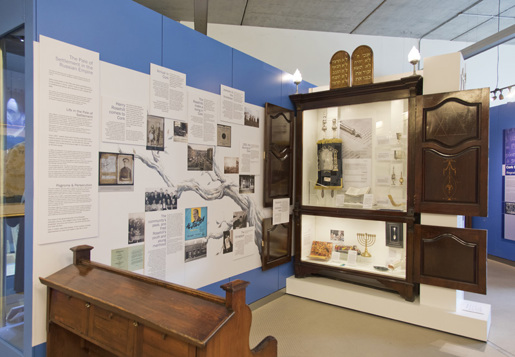
(Above). General view of the museum's permanent Hebrew exhibition, showing the restored pew in the foreground and the Ark in the background
Every synagogue has an ark in which the sacred texts of the Hebrew Bible or Torah are stored. At the Cork synagogue, this function had originally been fulfilled by a large ornate wooden cupboard, but this was replaced with a more suitable structure in subsequent years. By the time the synagogue closed in 2016, the original ark was being used for storing prayer books and other material. It had suffered extensive damage and neglect and the damp conditions of the synagogue had had a detrimental effect on the original ark.
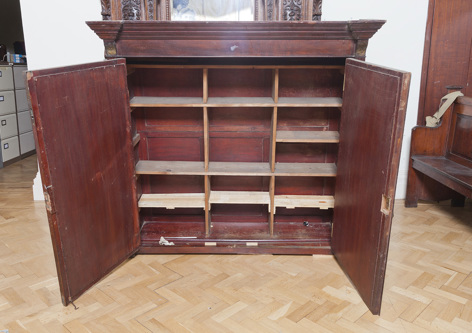 .
. 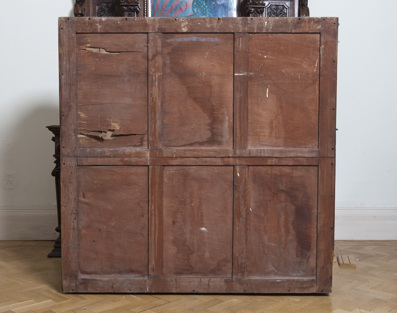 .
. 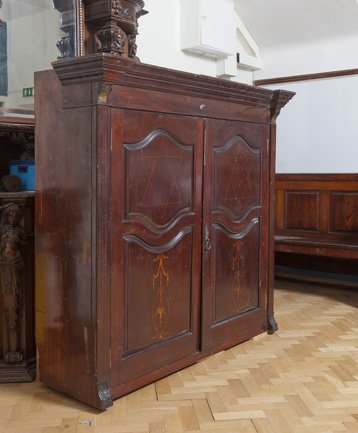
(Above, left middle and right). Part of the Hebrew Ark, before restoration and conservation was undertaken.
Early in the process, it became obvious that the museum would not be able to put the original ark into long-term storage because of its size and condition. It was, therefore, decided to incorporate the ark into the exhibition itself by making it the central display. Of course, this meant that the cupboard needed to be refurbished. Its impressive dimensions - 2.5m in height, 1.52m in width and 0.60m deep – meant that the cupboard required a great deal of conservation. Furniture and wood conservator, Colm Kenny, was given the task of conserving the cupboard and making it ready for its new use as a museum display cabinet.
Colm removed and cleaned all the corroded metal hinges and fittings. The cupboard was cleaned and treated for insect and mould damage. All unoriginal wood was removed, and any weak or damaged parts were repaired and strengthened. The doors were removed, and interior substructures were inserted into the ark to mount objects to.
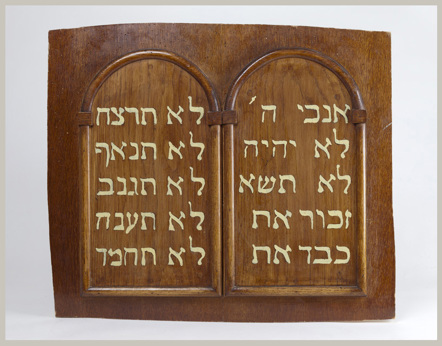 .
. 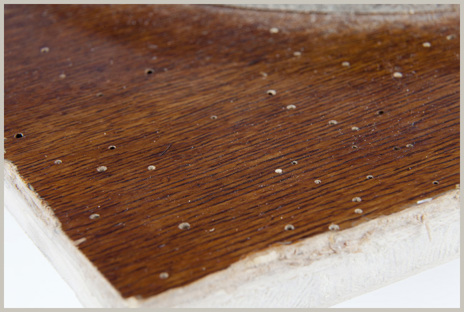
(Above) Wooden Plaque containing the 10 commandments. Note RH image of the plaque containing woodworm.
The way in which the ark was conserved also allows for it to be reassembled into its original form easily if needed. All the changes and modifications applied to make the cupboard into a modern museum case are reversible and will cause no long-term damage to the piece. The ark has become a functional piece of history, giving it a new lease of life, whilst also ensuring that it is preserved for future generations.
The Pew
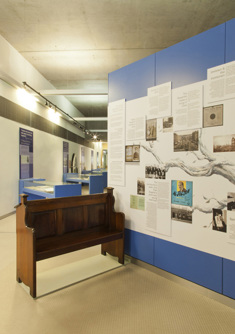
(Above) The restored Pew installed in the Hebrew exhibition space.
When the synagogue closed, there were over 30 pews of various sizes left in the building. The museum acquired one of them. It was in relatively good condition and only required some minor repairs. Colm Kenny also undertook this conservation work. The pew was cleaned, polished and waxed, but any marks present on the pew were kept to reflect its history and to commemorate all those who had sat and prayed on it. As was the case with the re-purposed cupboard, we decided to make the pew a functional aspect of the exhibition, allowing visitors to sit on it as they enjoy the Hebrew Congregation Exhibition.
Other Objects Conserved
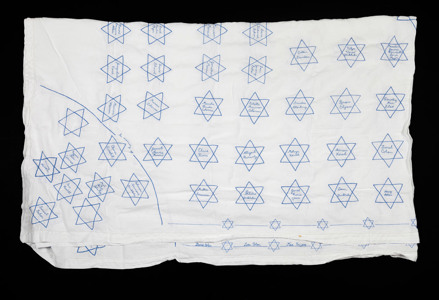 .
. 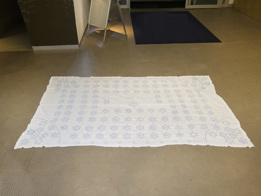
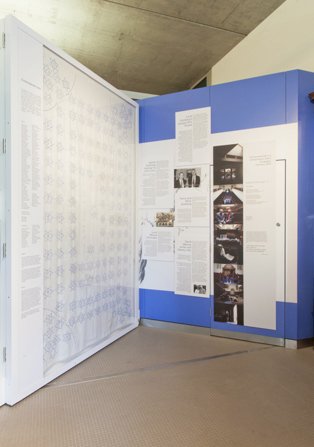
(Above, left and right). Communal table cloth, before restoration and installed now in the Hebrew Congregations exhibition space.
Conservator, Rachael Phelan, was employed to clean, repair and prepare a communal tablecloth for exhibition. This important object recorded the names and deaths of the Cork Hebrew Congregation since the 1940s. All the names were embroidered onto the table cloth. The cloth, however, was in poor condition with some tears and heavy creasing as a result of the synagogue’s damp conditions and inadequate storage facilities. Rachael’s work has ensured the preservation of an important visual record of the Cork Hebrew Congregation in the latter half of the twentieth century.
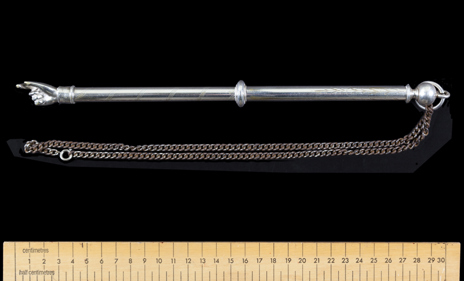
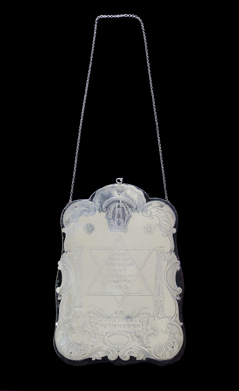
(Above) The Hebrew Torah pointer or 'Yad', after restoration(left). And (right) the breast plate.
Conservators, Michael Duerden and Claudia Kinmonth, treated and cleaned all the silver and other metal miscellany associated with the synagogue, including the metal Torah pointer known as a Yad, the Torah’s ceremonial breast plate and the Star of David that had originally hung over the entrance to the synagogue.
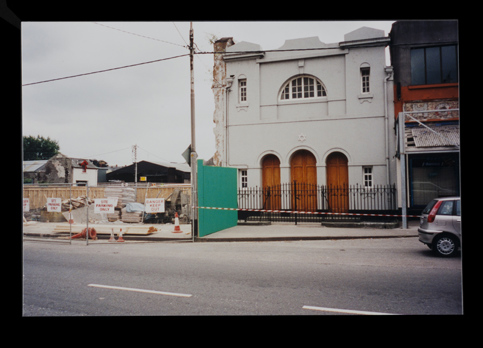 .
. 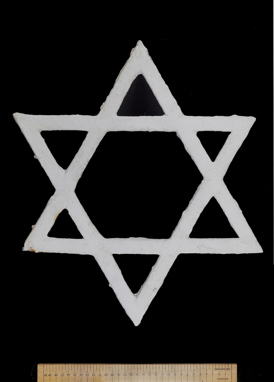
(Above, left and right). The Star of David that was located above the main entrance to the synagogue on the South Terrace.
This project required close collaboration and co-ordination between the exhibition designers, Aideen O’ Connor and Theo Dahlke of Heritage Works, and the team of conservators needed to bring the Cork Hebrew Congregation to life through the life and times of the Rosehill Family. This important work has enabled the history of the community to be preserved and remembered especially as so few of the congregation still live in Cork.
- d) The MacSwiney Catalonian Doll
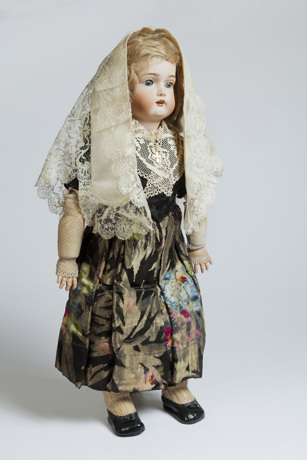 .
. 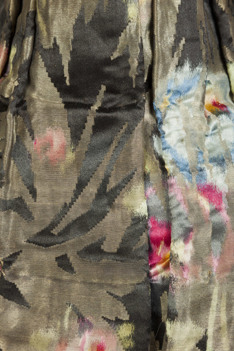
(Above). The Catalonian Doll before restoration (left) and detail (right) showing the metallic interwoven thread.
This fascinating object symbolises the profound impact Terence MacSwiney’s hunger strike and eventual death had on numerous peoples and organisations around the world. In the many independence struggles of the 20th century, the names of MacSwiney and his compatriots were revered and honoured by those enduring their own political struggles. This was especially apparent in Spain where the Basque and Catalonian separatist movements drew inspiration from the life and actions of MacSwiney.
Following his father’s death, CADCI, a Catalan trade union and social association, presented Maire MacSwiney, Terence’s daughter, with a beautiful doll dressed in what is traditional Catalonian costume. The doll is approximately 55cm tall and 30cm wide. The body, head and articulated limbs are made from porcelain and the doll is dressed in multiple articles of clothing. The dress is made of the finest linen and silk and complemented by exquisite lace mittens, stockings, mantilla and shawl. Everything was hand stitched to the highest quality. Even the leather shoes are stamped with the mark of a reputable shoemaker from Barcelona. It is clear, therefore, that no expense was spared in creating this doll.
in 2020, the doll was loaned to the Crawford Art Gallery for inclusion in their latest Terence MacSwiney exhibition, ‘Citizen Nowhere/Citizen Somewhere’. It was decided that the doll needed to be assessed by a conservator and cleaned prior to going on display. Thankfully, the doll itself was in good condition, so the majority of conservation work would be focused on cleaning and minor repairs. Conservator, Róisín Miles, carried out this work.
(Above) Crawford Art Gallery Registrar Jean O'Donovan explaining the conservation work of the 'Catalonian Doll'. The doll was loaned by CPM to the Crawford Art Gallery's exhibition 'Citizen Nowhere/Citizen Somewhere'. The Imagined Nation' in 2020.
Róisín undressed and assessed every part of the doll and its clothing. The doll had surface soiling from the accumulation of nearly a century of dust and dirt and there were some indications of natural wear and tear on some of the lace items. Everything was carefully cleaned and repairs were made where needed. Thanks to Róisín’s great work, the doll has been rejuvenated and we get a better impression of what the doll would have looked like when it was first made.
This project was partly funded by the Crawford Art Gallery. Thanks to Dawn Williams and Jean O’Donovan for their help and support.
- e) I.R.A. Operational Map
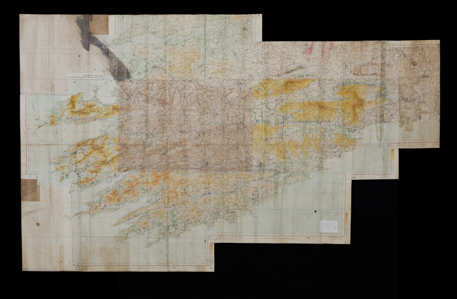 .
. 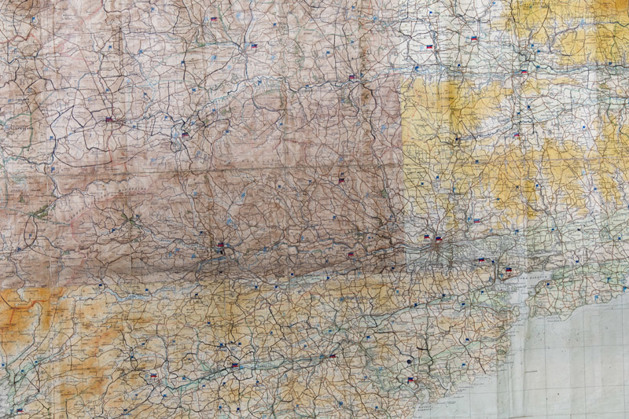
(Above) The I.R.A. operational map (left) and detail (right) after conservation
In 2016, the museum acquired a large field map that had been used by the I.R.A. during the War of Independence and possibly the Civil War. We believe it was used in Mallow by members of the Cork No. 2 Brigade, but further research is required in order to get the map’s full provenance.
The map arrived at the museum looking worse for wear and existed in several pieces. It was folded into a roughly rectangular shape resulting in many creases and some minor tears. The map measures 2.06m x 1.76m when fully extended. To ensure the preservation of this important object related to such an important period of Cork’s history, the services of paper conservator, Paul Curtis of Muckross House Bookbinding and Conservation, was employed to repair and reassemble the map.
The map is now fully complete and is stored rolled up, preventing any further potential damage when stored. The map has been photographed and the digital image will be made available for further research to identify all the meanings behind the symbols and locations marked on the map. It will no doubt become an important resource in the future study of the War of Independence.
